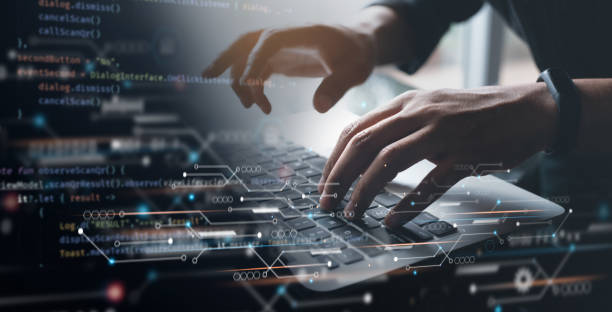
The modern marine industry is undergoing a quiet but powerful transformation. Vessels are no longer defined solely by horsepower, hull design, or radar range. Instead, the conversation is shifting toward how crews interact with their ships—and how that interaction can be smarter, safer, and more seamless. This is where advanced human-machine interface (HMI) technology steps in.
From small workboats to ocean-crossing commercial vessels, marine HMI solutions are redefining how operators control, monitor, and manage their systems. These integrated interfaces allow for streamlined navigation, engine diagnostics, lighting, fuel efficiency, and more—all in one intelligent, user-friendly control hub.
The Basics: What Is a Marine HMI?
In technical terms, a human-machine interface (HMI) is a user interface that connects a person to a machine, system, or device. In marine environments, HMIs act as the captain’s central command—visualizing and managing everything from propulsion to bilge pumps and onboard climate controls.
But in real-world application, it’s so much more. An effective marine HMI turns a chaotic dashboard into a sleek, single-screen control system that empowers captains, engineers, and crew with better visibility, quicker decision-making, and improved safety.
Simplifying the Complex: Why Integrated Interfaces Matter
Traditional vessel control systems rely on dozens of switches, dials, meters, and isolated controls for different subsystems. Trying to read engine temperatures, adjust trim tabs, and monitor battery performance all at once is not only cumbersome—it’s dangerous in high-pressure moments.
That’s where modern marine HMIs make a difference:
- Consolidated Control: Operators can access multiple systems from a single touchscreen, often with customizable layouts.
- Visual Clarity: Graphical data is easier to interpret than gauges or blinking LEDs.
- Touch & Swipe Functionality: Like smartphones, these interfaces respond intuitively, reducing the learning curve.
As vessel technology becomes more complex, HMIs are becoming the glue that holds it all together—both functionally and visually.
Customization for Every Vessel Type
One of the biggest advantages of using marine HMI solutions is the ability to tailor the interface to each vessel’s unique needs. Whether you’re operating a commercial fishing trawler, a luxury yacht, or a high-speed patrol craft, your interface should work with your workflow, not against it.
- Commercial vessels need data-heavy dashboards for logistics and diagnostics.
- Yachts and leisure boats often prioritize sleek aesthetics and ease of use.
- Industrial craft benefit from rugged designs and real-time alerts for maintenance and safety.
Because modern HMIs are software-driven, they’re inherently flexible. Panels can be customized for day/night operation, multiple language support, emergency override modes, and more.
The Role of Real-Time Data and AI
Another game-changer is how these systems handle and process data. Today’s marine HMIs don’t just display numbers—they provide intelligent feedback.
Examples include:
- Predictive maintenance alerts based on engine run hours or wear indicators.
- Real-time GPS overlays for collision avoidance.
- Automated logs of temperature, voltage, and fuel usage for performance optimization.
Many high-end systems also feature AI-assisted analytics. This helps vessel operators make smarter decisions faster—whether it’s when to schedule maintenance or how to optimize route planning for fuel efficiency.
Training and Onboarding Made Easier
Modern HMI systems are also transforming the way crews are trained. Instead of needing extensive familiarity with dozens of switches and meters, new crew members can quickly learn system functions through intuitive touch interfaces.
Some HMI platforms even offer:
- Simulated training modes for hands-on practice
- Multilevel access control for different crew responsibilities
- On-screen troubleshooting and help guides
The result? Fewer mistakes, faster onboarding, and greater overall safety.
Improving Emergency Preparedness
Marine emergencies—from mechanical failure to fire or flooding—demand quick, precise action. An effective HMI can provide clear alerts, automated system shutoffs, and even visual guides for emergency protocols.
For example:
- Water ingress sensors can immediately flash warnings and highlight affected compartments.
- Engine overheating triggers an alert with steps to reduce load or shut down.
- Power failures can initiate backup sequences automatically.
In these moments, the difference between a safe response and a disaster could come down to interface clarity and response time.
Built Tough for Harsh Environments
Maritime conditions are brutal. Salt air, temperature extremes, vibration, and constant motion take a toll on onboard electronics. Marine HMI systems are built specifically to endure these elements:
- IP-rated waterproof casings
- UV-resistant touchscreens
- Anti-glare coatings for outdoor readability
- Shock and vibration resistance
These rugged builds mean you can rely on your system, even when the weather—and the sea—is working against you.
The Future: HMI and Autonomy
As we look ahead, HMI technology will be even more vital. Autonomy and remote operation are no longer science fiction—they’re active development areas for commercial fleets and even recreational boats.
Advanced HMIs will support:
- Autonomous docking and undocking
- Remote diagnostics via satellite
- Integrated drone deployment from vessels
- Seamless switches between manual and autonomous operation
These systems won’t replace crews—they’ll empower them to do more with less stress and greater precision.
Steering the Future with Smarter Interfaces
In the fast-changing world of marine technology, integration is everything. From navigation to diagnostics to comfort controls, today’s vessel operators need tools that make complex systems manageable, fast, and fail-safe.
Investing in marine HMI solutions isn’t just about sleek touch screens or flashy dashboards—it’s about better decisions, greater safety, and smoother voyages. Whether you’re outfitting a new build or upgrading an existing fleet, it’s time to think about the most powerful system on your boat: the one that connects the human brain to the heart of the machine.